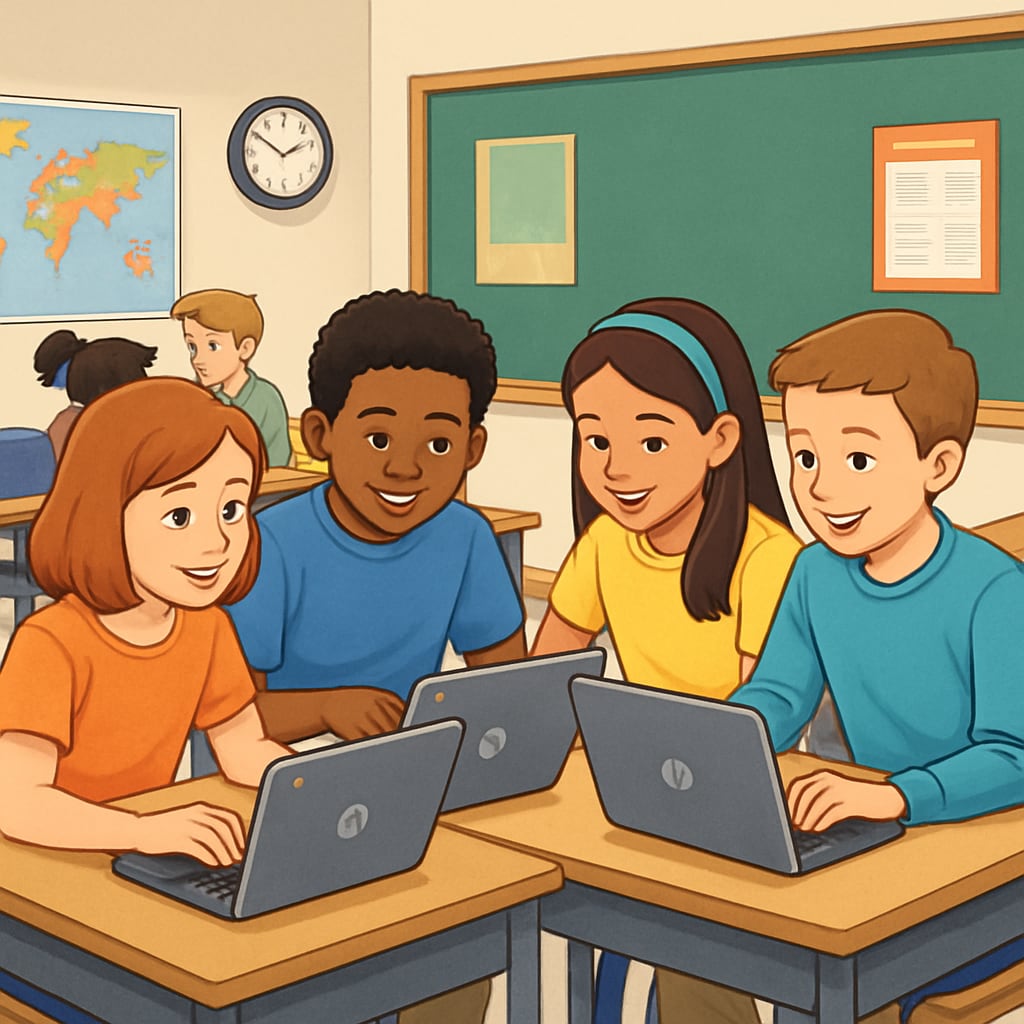In today’s K-12 education landscape, tools like Chromebooks have revolutionized learning by dramatically increasing efficiency. However, this surge in technological convenience raises concerns about its impact on students’ critical thinking abilities and curiosity. As education becomes increasingly tech-driven, educators and policymakers must explore how we can achieve a balance between efficiency and fostering deeper cognitive skills.
Efficiency: The Bright Side of Educational Technology
Educational technology (EdTech) has undeniably streamlined classroom processes. Tools like Chromebooks provide instant access to a wealth of resources, enabling students to complete assignments faster and collaborate more effectively. For example, platforms such as Google Classroom simplify communication between teachers and students, while adaptive learning software tailors content to individual learners’ needs.
Moreover, EdTech promotes inclusivity by allowing students with diverse learning styles or disabilities to access customized educational experiences. According to Wikipedia’s page on assistive technology, these tools have been instrumental in bridging gaps in traditional education. Such advancements clearly highlight the transformative power of technology in education.

Critical Thinking: An Unintended Victim?
Despite its advantages, the efficiency brought by EdTech comes with unintended consequences. The overreliance on technology might hinder the development of critical thinking—a skill crucial for problem-solving, decision-making, and lifelong learning. For example, when students rely on instant answers provided by search engines, they may miss opportunities to engage in deeper analysis and inquiry.
Additionally, streamlined learning processes often focus on task completion rather than exploration. This shift may reduce students’ curiosity and the ability to ask “why” instead of just “how.” According to Britannica’s overview of critical thinking, this skill involves questioning assumptions and evaluating evidence, both of which require time and deliberate effort.

Striking the Right Balance
To address this dilemma, educators must adopt strategies that complement technology’s efficiency while nurturing critical thinking. Here are some actionable approaches:
- Integrating Socratic Seminars: Encourage students to engage in debates and discussions that prompt them to justify their reasoning rather than relying on quick answers.
- Project-Based Learning: Assign tasks that require research, planning, and hands-on execution, which promotes deeper engagement and curiosity.
- Technology-Free Time: Allocate specific periods for non-digital activities like journaling or brainstorming to foster independent thought.
By blending these methods with EdTech, educators can create a learning environment that values both efficiency and critical thinking. As a result, students will gain not only the skills to thrive in a tech-driven world but also the cognitive depth to navigate complex challenges.
The Future of Education: Balancing Innovation and Introspection
As EdTech continues to evolve, its role in education will inevitably expand. However, the ultimate goal should not merely be efficiency but also the empowerment of students as critical thinkers and life-long learners. Schools and educators must stay vigilant, ensuring technology enhances rather than detracts from these objectives.
In this rapidly changing educational landscape, finding the right balance is not easy—but it is essential. By prioritizing both technological innovation and the development of critical thinking, we can create a generation of students equipped to lead with both competence and curiosity.


